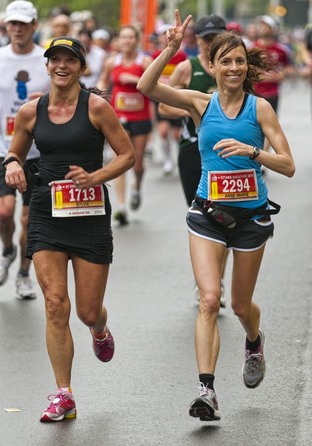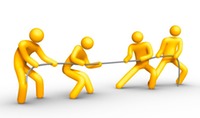
Did yo know that women were not allowed to run marathon at the Olympics until the 1984 games in Los Angeles. Prior to the 1960´s women were banned from running any race longer than 800 meters, and they could not officially participate in marathon competitions until 1970. The sports authorities believed that they could harm themselves and that the woman body was unsuitable for distance running.
Women had been excluded from track and field competition altogether until 1928, when the longest race was the 800 meters. Despite a world record by winner Lina Radke of Germany, many of the competitors had not properly prepared for the race and several collapsed in exhaustion. This led Olympic organizers to consider the race too strenuous for women.
Winner of the first women´s marathon at the í Los Angeles Olympics in 1984 was Joan Benoit from the United States. She was then 27 years old. Her time, 02:24:52, would have won 11 of the previous 20 men´s Olympic marathons.
In March 1984, Benoit injured her knee severely during a 20 mile training run, forcing her to undergo arthroscopic knee surgery just 17 days before the United States Olympic Women's Marathon Trials were scheduled. However, she recovered from the surgery much quicker than expected, and showed up at the trials as the woman to beat. She beat runner-up Julie Brown, only by 30 seconds, winning in 2:31:04. Three months later, she competed in the 1984 Summer Olympics in Los Angeles and won the first Olympic Women's Marathon hundred meters ahead of Grete Waitz, Rosa Mota, and Ingrid Kristiansen, all considered legends in their own rights
The fight for women being allowed to compete in long distance running had been going on for some time. Roberta Gibb hid behind a bush at the start of the Boston Marathon, sneaking into the field and finishing the race in an unofficial time of 3:21:25. She was the first woman known to complete the arduous Boston course. Gibb had been inspired to run by the return of her race entry with a note saying that women were not physically capable of running a marathon.
This is how Roberta Gibb describes her experience:
"I took the bus back from San Diego, curled up in the seat for three nights and four days, eating only a bag of apples and bus station chili and arrived the day before the race at my parents’ house in Winchester. I ate a huge roast beef dinner and apple pie. The next day my mother drove me to the start in Hopkinton and dropped me off. I ran up and down a couple of miles to warm up, and then I hid in the bushes near the start.
When the gun went off I jumped into the pack. I had no idea what kind of reception I’d get. I was afraid the police would arrest me and that the spectators might boo and hiss. I was afraid that if the officials saw I was a woman they’d throw me out. I was all alone. I knew the most important thing was to prevent anyone from stopping me, so I wore a blue sweatshirt with the hood pulled up and my brother’s Bermuda shorts tied up with a string, over my black, tank-topped bathing suit.
Very quickly, the men behind me, studying my anatomy, figured out that I was a woman, and to my great relief, they were supportive and friendly. They could have shouldered me off the course, but instead they said, “It’s a free road. We won’t let anyone throw you out.” So contrary to what some people think, it was not a men-versus-women confrontation. The men were glad that I was running. With this encouragement, I took off the hot, heavy sweatshirt, and then everyone could see that I was a woman. A cheer went up from the crowd when they saw a woman was running."




